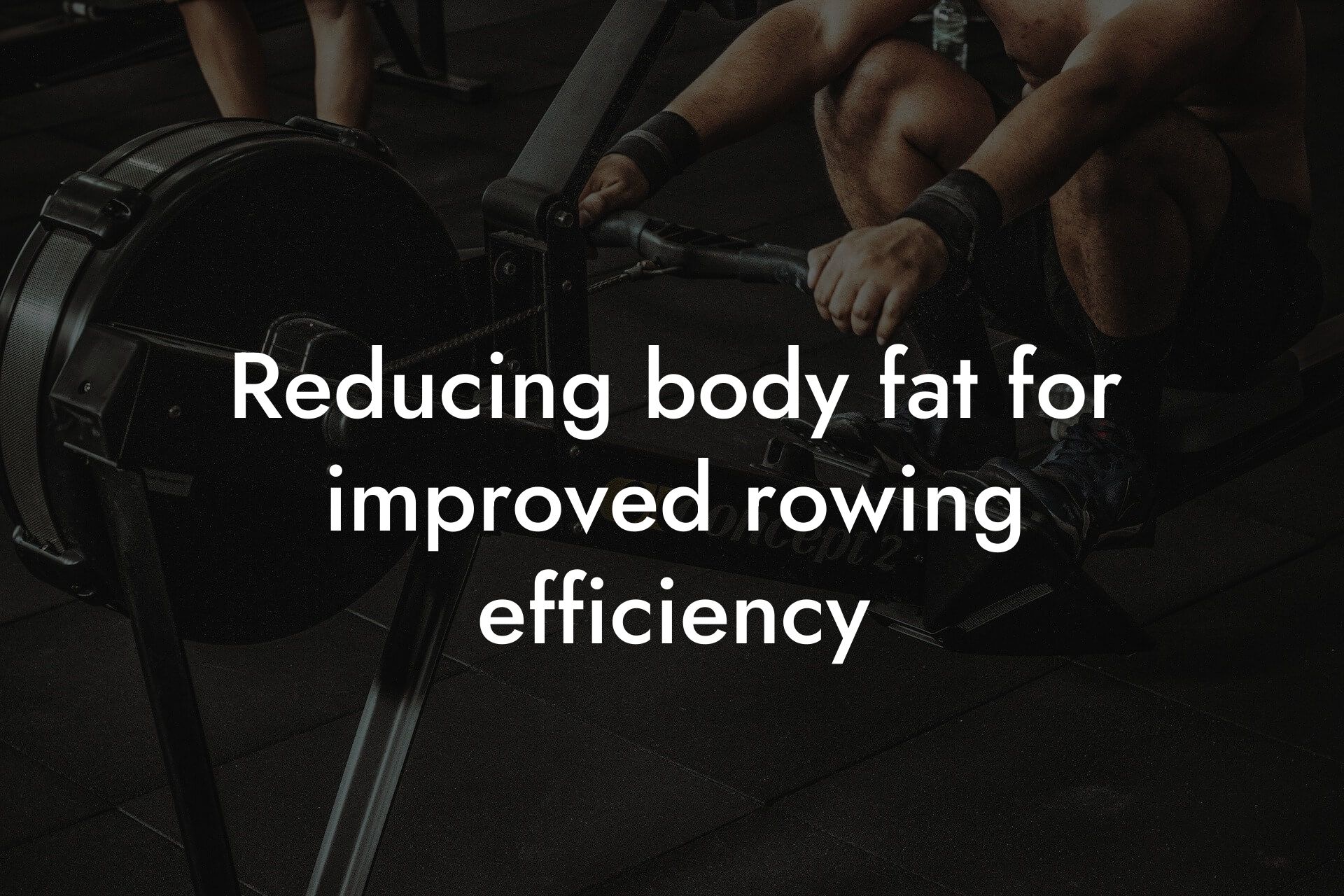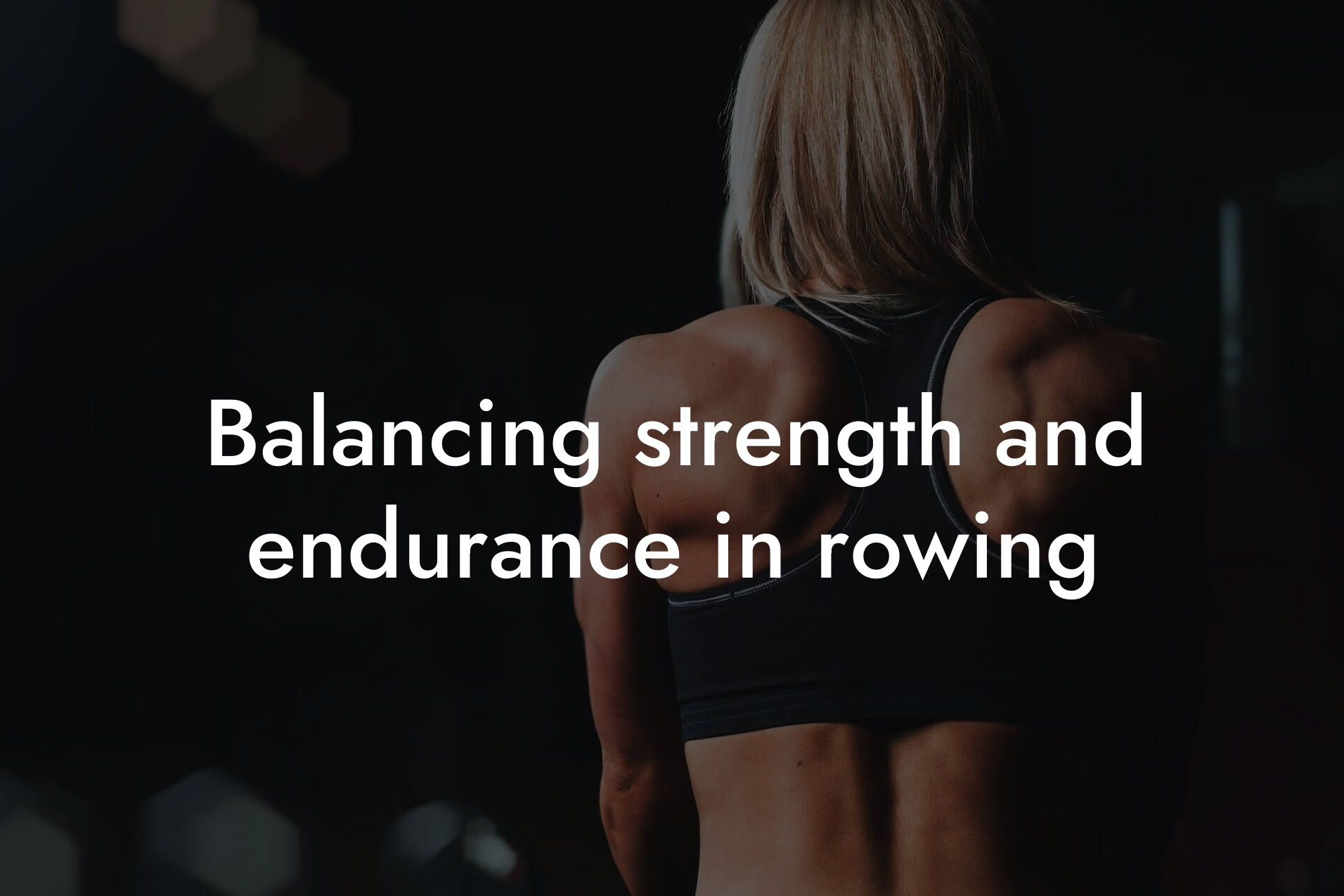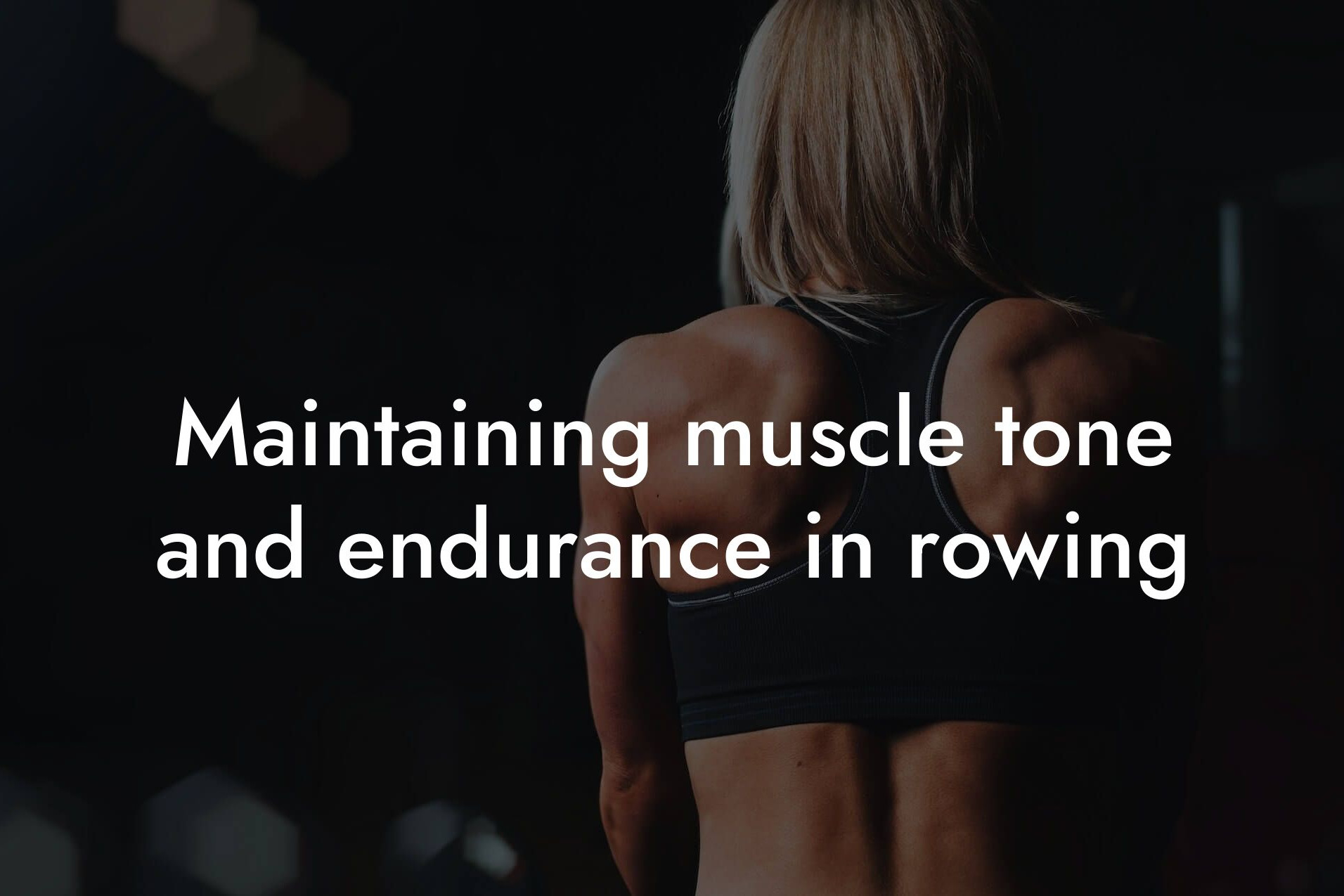As a high-earning professional, you understand the importance of optimizing your physical performance to stay ahead in your career. For rowers, body composition plays a critical role in determining their performance on the water. In this article, we'll delve into the world of body composition and explore how it impacts rowing performance, providing you with the knowledge you need to take your rowing to the next level.
Table of Contents
- What is Body Composition?
- The Ideal Body Composition for Rowers
- The Impact of Body Fat on Rowing Performance
- The Role of Lean Mass in Rowing Performance
- How DEXA Scans Can Help Rowers Optimize Their Body Composition
- Nutrition and Training Strategies for Optimizing Body Composition
- Frequently Asked Questions
What is Body Composition?
Body composition refers to the percentage of fat and lean mass in your body. It's a critical aspect of overall health and fitness, as it affects your metabolism, energy levels, and athletic performance. In the context of rowing, body composition is particularly important, as it directly impacts your power-to-weight ratio, endurance, and overall efficiency on the water.
The Ideal Body Composition for Rowers
For rowers, the ideal body composition is one that balances lean mass and body fat percentage. A general guideline is to aim for a body fat percentage between 10-15% for men and 15-20% for women. This range allows for sufficient energy storage while maintaining a high power-to-weight ratio. However, it's essential to note that individual variations can occur, and the ideal body composition may differ depending on factors such as age, sex, and rowing style.
The Impact of Body Fat on Rowing Performance
Excess body fat can significantly hinder rowing performance. Carrying extra weight increases the energy required to move the boat, reducing your overall efficiency and endurance. Additionally, excess body fat can lead to increased drag, making it more challenging to maintain speed and momentum. Furthermore, high body fat percentages are often associated with decreased muscle mass, which can further compromise rowing performance.
The Role of Lean Mass in Rowing Performance
Lean mass, on the other hand, is critical for generating power and speed in rowing. A high percentage of lean mass indicates a greater amount of muscle tissue, which is essential for propelling the boat through the water. Rowers with a high lean mass percentage tend to have improved power output, acceleration, and overall performance.
How DEXA Scans Can Help Rowers Optimize Their Body Composition
At Tano Performance Group, we utilize DEXA (Dual-Energy X-ray Absorptiometry) scans to provide rowers with a comprehensive body composition analysis. DEXA scans offer a precise measurement of body fat percentage, lean mass, and bone density, allowing rowers to identify areas for improvement and track changes over time. With this information, rowers can develop targeted training and nutrition plans to optimize their body composition and enhance their performance.
Nutrition and Training Strategies for Optimizing Body Composition
To optimize body composition for rowing performance, rowers should focus on a balanced diet that provides adequate protein, complex carbohydrates, and healthy fats. Aiming to increase lean mass while reducing body fat percentage can be achieved through a combination of resistance training, high-intensity interval training, and endurance exercises. Additionally, incorporating strength training exercises that target the muscles used in rowing, such as the legs, core, and back, can help improve power output and overall performance.
In conclusion, body composition plays a critical role in determining rowing performance. By understanding the importance of balancing lean mass and body fat percentage, rowers can optimize their body composition to improve power output, endurance, and overall efficiency on the water. With the help of DEXA scans and targeted nutrition and training strategies, rowers can take their performance to the next level and achieve their goals.
At Tano Performance Group, we're committed to helping high-earning professionals like you achieve their fitness and performance goals. With our comprehensive body composition analysis and expert guidance, you can unlock your full potential and take your rowing performance to new heights.
Frequently Asked Questions
What is body composition, and how does it relate to rowing performance?
Body composition refers to the percentage of fat and lean mass in the body. In the context of rowing, body composition plays a crucial role in determining an athlete's performance. A higher percentage of lean mass, particularly in the upper body, can improve rowing efficiency and power, while excess body fat can hinder performance.
Why is body fat percentage important for rowers?
Excess body fat can increase drag and reduce propulsion in the water, making it more difficult to achieve optimal performance. Additionally, carrying excess body fat can lead to increased energy expenditure, reducing endurance and overall rowing efficiency.
How does lean mass impact rowing performance?
Lean mass, particularly in the upper body, is essential for generating power and speed in rowing. A higher percentage of lean mass can improve rowing efficiency, allowing athletes to maintain a higher stroke rate and generate more power with each stroke.
What is the ideal body composition for rowers?
The ideal body composition for rowers varies depending on the individual and their specific goals. However, a general guideline is to aim for a body fat percentage between 10-15% for men and 15-20% for women. Additionally, rowers should strive to maintain a high percentage of lean mass, particularly in the upper body.
How can I measure my body composition?
There are several ways to measure body composition, including dual-energy X-ray absorptiometry (DXA), skinfold measurements, and bioelectrical impedance analysis (BIA). It's essential to work with a qualified healthcare professional or certified coach to determine the best method for your individual needs.
What is the relationship between body composition and power output in rowing?
Research has shown that there is a strong correlation between body composition and power output in rowing. Athletes with a higher percentage of lean mass and lower body fat percentage tend to produce more power and achieve faster times.
How does body composition impact endurance in rowing?
Body composition plays a significant role in endurance performance in rowing. Athletes with a higher percentage of lean mass and lower body fat percentage tend to have improved cardiovascular endurance and are better able to sustain a high intensity effort over a longer period.
Can I improve my rowing performance by losing weight?
While losing weight may improve rowing performance in the short term, it's essential to focus on losing body fat while maintaining or increasing lean mass. Losing lean mass can actually hinder rowing performance and increase the risk of injury.
How does nutrition impact body composition in rowers?
Nutrition plays a critical role in maintaining optimal body composition for rowing. A balanced diet that includes adequate protein, complex carbohydrates, and healthy fats can help support lean mass growth and fat loss.
What role does hydration play in body composition and rowing performance?
Proper hydration is essential for maintaining optimal body composition and rowing performance. Even mild dehydration can lead to decreased power output, endurance, and overall performance.
How can I incorporate strength training into my rowing program to improve body composition?
Incorporating strength training exercises that target the upper body, such as pull-ups, dumbbell rows, and lat pulldowns, can help improve lean mass and overall rowing performance. It's essential to work with a qualified coach or trainer to develop a strength training program that meets your individual needs.
What is the impact of body composition on injury risk in rowing?
Research has shown that athletes with a higher percentage of body fat and lower percentage of lean mass are at increased risk of injury. Maintaining optimal body composition can help reduce the risk of injury and improve overall rowing performance.
How can I monitor my body composition over time?
Regularly tracking body composition metrics, such as body fat percentage and lean mass, can help you monitor progress and make adjustments to your training and nutrition program as needed. It's essential to work with a qualified healthcare professional or certified coach to develop a monitoring plan that meets your individual needs.
What is the relationship between body composition and rowing technique?
Body composition can impact rowing technique, particularly in terms of posture and movement patterns. Athletes with a higher percentage of lean mass and lower body fat percentage tend to have improved rowing technique and are better able to maintain optimal posture and movement patterns.
Can I improve my body composition through rowing alone?
While rowing can be an effective way to improve cardiovascular fitness and burn calories, it may not be enough to significantly impact body composition. Incorporating strength training and a balanced nutrition program can help support lean mass growth and fat loss.
How does body composition impact mental performance in rowing?
Body composition can impact mental performance in rowing, particularly in terms of confidence and self-efficacy. Athletes who feel confident in their body composition tend to perform better and have improved mental toughness.
What are some common myths about body composition and rowing performance?
One common myth is that rowers need to be lean and skinny to be fast. While a lower body fat percentage can be beneficial, it's essential to maintain a balance between lean mass and body fat to optimize rowing performance. Another myth is that rowing alone can lead to significant weight loss and improved body composition. While rowing can be an effective way to burn calories, it's essential to incorporate strength training and a balanced nutrition program to support lean mass growth and fat loss.
How can I work with a coach or trainer to improve my body composition for rowing?
Working with a qualified coach or trainer can help you develop a personalized training and nutrition program that meets your individual needs and goals. They can help you set realistic goals, monitor progress, and make adjustments to your program as needed.
What are some common mistakes rowers make when trying to improve their body composition?
One common mistake is focusing solely on weight loss, rather than body fat percentage. Another mistake is neglecting strength training and relying solely on rowing to improve body composition. Additionally, rowers may make the mistake of drastically reducing caloric intake, which can lead to lean mass loss and decreased performance.
How can I balance my training and nutrition program to support optimal body composition for rowing?
Balancing training and nutrition is critical to supporting optimal body composition for rowing. This includes incorporating a balanced diet, regular strength training, and adequate rest and recovery. It's essential to work with a qualified coach or trainer to develop a personalized program that meets your individual needs and goals.
What role does sleep and recovery play in body composition and rowing performance?
Sleep and recovery play a critical role in body composition and rowing performance. Adequate sleep and recovery can help support lean mass growth, fat loss, and overall performance, while inadequate sleep and recovery can lead to decreased performance and increased risk of injury.
How can I use body composition metrics to set realistic goals and track progress?
Using body composition metrics, such as body fat percentage and lean mass, can help you set realistic goals and track progress. This can include setting specific goals for body fat percentage, lean mass, and overall performance, and regularly tracking progress through measurements and testing.
Here are some related articles you might love...
- Reducing body fat for improved rowing efficiency
- Balancing strength and endurance in rowing
- Maintaining muscle tone and endurance in rowing
- Recovery techniques for rowers after intense sessions
- The role of rowing in cardiovascular health
- Strength training tips to complement your rowing routine
- Using DEXA scans to monitor progress in rowing
- Bone density and its role in rowing performance
- Nutrition strategies for sustained energy during rowing workouts
Zak Faulkner
Zak Faulkner is a leading authority in the realm of physical health and body composition analysis, with over 15 years of experience helping professionals optimise their fitness and well-being. As one the experts behind Tano Performance Group, Zak has dedicated his career to providing in-depth, science-backed insights that empower clients to elevate their physical performance and overall health.
With extensive knowledge of DEXA technology, Zak specializes in delivering comprehensive body assessments that offer precise data on body fat, muscle mass, bone density, and overall physique. His expertise enables individuals to make informed decisions and achieve their fitness goals with accuracy and confidence. Zak’s approach is rooted in a deep understanding of human physiology, combined with a passion for helping clients unlock their full potential through personalised strategies.
Over the years, Zak has earned a reputation for his commitment to excellence, precision, and client-focused service. His guidance is trusted by top professionals who demand the best when it comes to their health. Whether advising on fitness programs, nutritional strategies, or long-term wellness plans, Zak Faulkner’s insights are a valuable resource for anyone serious about taking their health and fitness to the next level.
At Tano Performance Group, Zak continues to lead our Content Team revolutionising how professionals approach their physical health, offering unparalleled expertise that drives real results.




